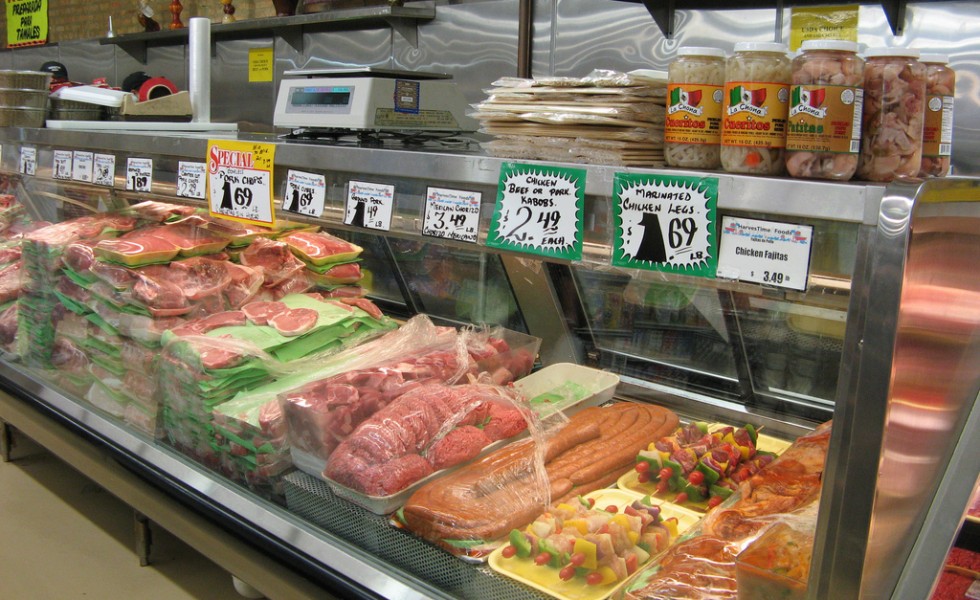The Other Red Meat
Posted on August 25, 2013

A lean hog is not a fat chicken but the marketing geniuses hired by the National Pork Board sure sold a lotta’ hams, bacons and butts when, in 1987, they began to promote pork as “The Other White Meat.”
Now, 25 years after that brilliant slight of hand, the pork crowd wants to be known as something else—the other red meat, beef—and they just pulled an even bigger rabbit out of their hat to pull it off.
They had help. Two years ago, checkoff leaders from the Cattlemen’s Beef Board (CBB) and the National Pork Board (NPB) voted to fund a joint research project to “reduce and eliminate consumer confusion at the meat case.”
The result, announced late last winter in Nashville, was a complete overhaul of something that goes by the unappetizing name of URMIS, or the Uniform Retail Meat Identity Standards.
The make-over, according the beef, pork and lamb checkoff-funded website www.meattrack.com, “created a Common Name standard that simplifies cut names, reduces unappealing terms, eliminates redundancies and provides a unique name structure for meat cuts.”
Well, kind of.
For example, according to meattrack.com, the complicated name “pork chop” is out and in is “pork porterhouse chop.”
Wow, huh?
Other pork chops (who knew?) will get other new names. The “pork rib chop” will become the “pork ribeye chop” and the “pork top loin chop” will shed that completely unworkable name and for the much preferred “pork New York chop.”
In all, “14 cuts of pork are getting new consumer-friendly cut names, many that align with already-famous beef names,” explains www.porkretail.org, a pork checkoff-funded website that dives into the pork-maiden/beef-married name thing.
Not surprisingly, the name changes “right out of the gate” will “help consumers think about pork in a whole new way: like a steak,” explains the website. This is “an unprecedented opportunity… to reap extraordinary benefits…”
Unless, of course, you’re sitting on a horse looking at a herd of cattle that will become actual porterhouses, ribeyes and New York strips. What does Big Pig’s big snout in your carcass make you?
Dupes, wrote Leo McDonnell, a Montana rancher who holds a seat on the 106-member CBB that runs the beef checkoff, in a May 31 letter to Craig. A. Morris, a deputy administrator at the U.S. Department of Agriculture’s Ag Marketing Service. (USDA has administrative oversight of several federally-chartered commodity checkoffs, including beef and pork.)
“I have visited with several current and past members of the [the beef checkoff’s] Operating Committee,” McDonnell wrote Morris, and “not one person recalls any disclosure… that such research would be used… to assist pork in getting approval for these historical product trade names for beef.”
So how did the beef checkoff fund research that ended up with pork shoulder being sold—no kidding—in meatcases and restaurants as “brisket”?
Danni Beer, a South Dakota rancher and fellow CBB member, wrote USDA a letter in May, that asked that exact question. In it she explains how she was given a 223-page book on beef checkoff “Authorization Requests” back in 2011 to study.
Many of those “ARs,” noted Beer, included “Attachment A’s’ from the National Cattlemen’s Beef Association,” the beef checkoff’s main contractor. One of those NCBA attachments, she explained, included funding for tracking “consumer confusion at the meatcase.”
But “nowhere,” she went on, “can I find a measurable objective that includes working with the National Pork Board… to develop across species a set of common names for retail cuts.”
Well, wrote USDA’s Morris in reply, maybe “the AR could have been written more clearly,” but since it was approved, it’s now in effect.
And that’s just how it is in the checkoff world where up is down, red meat is white meat and the very next pork checkoff slogan might be, Pork: And You Thought You Were Buying Beef!
Genius. Pure genius.
© 2013 ag comm
Share This